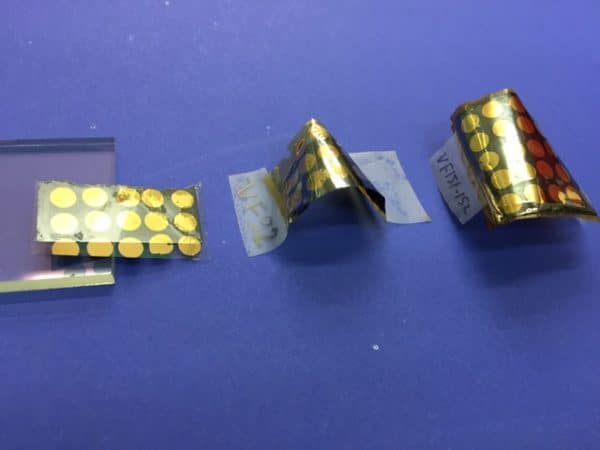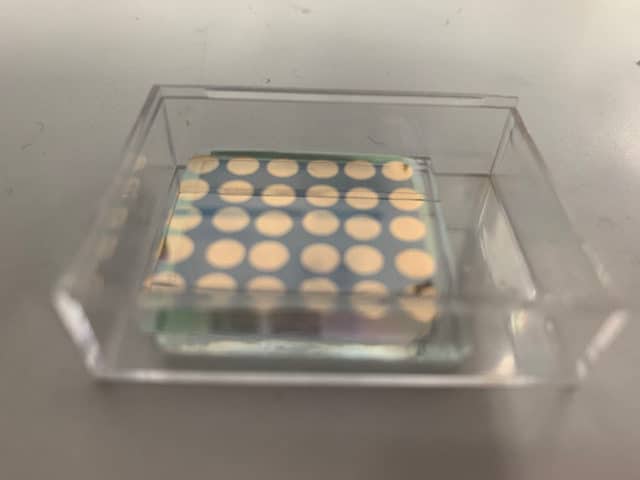pv magazine: Prof. Arvind, you dedicate a long chapter in “Solar Cells and Modules” to thin-film PV technologies such as cadmium telluride (CdTe) solar cells. Panels built with such cells are the only thin-film products that have been able to reach all market segments in the solar sector. Why is that?
Arvind Shah: The reasons are the following: relatively high efficiencies, low market prices, and the presence of U.S.-based manufacturer First Solar as a major provider of CdTe modules. (It) claims justifiably to be committed to sustainable PV manufacturing, responsible construction practices and minimizing the environmental impacts of its products across their life cycle, from raw material sourcing through end-of-life recycling. Indeed, end-of-life recycling is not provided for any other solar technology.
Alessandro Romeo: CdTe is a very robust material that can be successfully deposited with a large variety of deposition techniques with no issues on secondary phases. This is a unique feature in the panorama of thin-film solar cells. Also like other thin-film technologies, CdTe modules can be fabricated on pure glass with an all-in-line fabrication process at much lower temperatures than crystalline silicon.
Compared to crystalline silicon modules, cadmium telluride products can be produced at lower costs and with simpler production processes. How much room for improvement do you expect in this regard?
Shah: As far as I can personally judge, there is not much room for further improvement in the production process.
Romeo: CdTe is produced, compared to crystalline silicon, at a relatively low scale. Crystalline silicon has benefited from the large number of different companies involved in high-scale manufacturing that has strongly reduced the manufacturing cost per watt. Thin-film solar technology has not yet benefited from such a development. However, the costs are currently already very competitive with crystalline silicon. A higher scaling of the production processes with an increase of the module area and with a further reduction of process temperatures would reduce even more the final production cost.

Image: LAPS-Laboratory for Photovoltaics and Solid State Physics, University of Verona
What kind of improvements can be expected for this technology in terms of performance, efficiency and sustainability?
Shah: I would expect that the efficiency of commercial modules will be further increased and could attain 25% in the next decade.
Romeo: CdTe has been limited in performance by the relatively low open-circuit voltage due to the high compensation of the defects that reduces the carrier concentration. For this reason, one of the main research topics is CdTe doping. With a suitably controlled doping of the material, the efficiencies can be improved further, towards the Shockley-Queisser limit which is over 30%.
CdTe panels have suffered from instability in the past. Do you believe this issue has been completely overcome?
Shah: There is ample evidence that the problem of stability has been overcome.
Romeo: Stability was an issue as long as copper was not controlled in the device, as copper tends to diffuse into the material with time and degrades the solar cell. But this was definitely solved by applying a new type of contact where copper remains embedded in the zinc telluride (ZnTe) back contact. Since then, the cells have shown remarkable stability. At the moment, CdTe modules have a certified degradation of 0.2% per year.
Compared to crystalline silicon modules, CdTe panels are said to more effectively maintain efficiency at higher temperatures. Do you think this gap between the two technologies still exists?
Popular content
Shah: CdTe modules have excellent high-temperature behavior, with a relative temperature coefficient of the efficiency of -0.25% to -0.32% per degree Celsius. However, the newest crystalline silicon modules such as TOPCon and heterojunction modules have similar values. On the other hand, the older types of crystalline silicon modules had relative temperature coefficients of up to -0.4 % per degree Celsius and were clearly less favorable than CdTe modules. As shown in our book, the temperature coefficient of a module can be improved, if recombination is reduced and efficiency increased. There is more room for such an improvement in CdTe modules than in crystalline silicon modules. So we can expect that in the future CdTe with much better high-temperature behavior and relative temperature coefficients of down to -0.2% per degree Celsius should become available.
Romeo: At the moment, the temperature coefficient of CdTe modules is -0.28% per degree Celsius, which is one of the best available on the market. This advantage, which is intrinsic of the CdTe physical properties, will remain.
For this kind of technology, the right choice of soda lime glass as a substrate is a decisive factor to achieve low module prices. How could this influence production costs? What are the main issues with this kind of substrate?
Shah: This is not an issue, as glass producers all over the world are currently able to produce, at a very reasonable cost, soda lime glass, at a quality which is fully suitable for CdTe modules.
Romeo: CdTe modules can be in principle deposited on any type of low-cost soda lime glass if the front layers are engineered accordingly, so this is not a real issue.
Several kinds of CdTe deposition techniques are currently being adopted. Which ones might prevail in the future?
Shah: We expect the Vapor Transport Deposition (VTD) technique, already used today by First Solar, to continue to prevail in the future.
Romeo: High-temperature processes like VTD or close space sublimation (CSS) can deliver higher efficiencies. For this reason, these technologies are the best candidates for dominating the future of CdTe module production. However, production processes with lower temperatures are interesting because of their lower energy consumption and because they have a high potential for use in flexible modules.
Cadmium is a toxic compound and has always raised concerns about the potential environmental impacts of CdTe modules. Do you think these concerns are excessive?
Shah: Cadmium itself is toxic, but when bound to telluride, it is not toxic at all. In our book, we show evidence that it is extremely unlikely, even in the case of catastrophes, like fires, floods, or other unforeseen events, that cadmium telluride modules will decompose into cadmium and tellurium.
Romeo: As explained in our book, CdTe is a non-soluble material; soluble neither in water nor in other solvents. For this reason, the probability that broken pieces of this material left in water or in the soil might release cadmium is extremely low, as proven by different scientific reports. Moreover, we have to recall that this is a thin-film technology where a large solar module with a size of 1 square meter has a cadmium content that is lower than the cadmium contained in an AAA-size Ni-Cd battery. Furthermore, the cadmium within the solar module is bound to tellurium, unlike the cadmium contained in a nickel-cadmium (Ni-Cd) battery. The cadmium within the solar module is, therefore, no threat to the environment.
Prof. Shah has previously spoken to pv magazine about the future of heterojunction PV modules and amorphous silicon solar cells. Shah and co-author Sylvère Leu wrote “Solar Cells and Modules,” which was recently published by Springer. The book includes other contributions from Christophe Ballif, Adinath Funde, Detlef Sontag, Alessandro Romeo, Alessandro Virtuani, Mauro Pravettoni, Urs Muntwyler, and Stefan Nowak.
This content is protected by copyright and may not be reused. If you want to cooperate with us and would like to reuse some of our content, please contact: editors@pv-magazine.com.



By submitting this form you agree to pv magazine using your data for the purposes of publishing your comment.
Your personal data will only be disclosed or otherwise transmitted to third parties for the purposes of spam filtering or if this is necessary for technical maintenance of the website. Any other transfer to third parties will not take place unless this is justified on the basis of applicable data protection regulations or if pv magazine is legally obliged to do so.
You may revoke this consent at any time with effect for the future, in which case your personal data will be deleted immediately. Otherwise, your data will be deleted if pv magazine has processed your request or the purpose of data storage is fulfilled.
Further information on data privacy can be found in our Data Protection Policy.